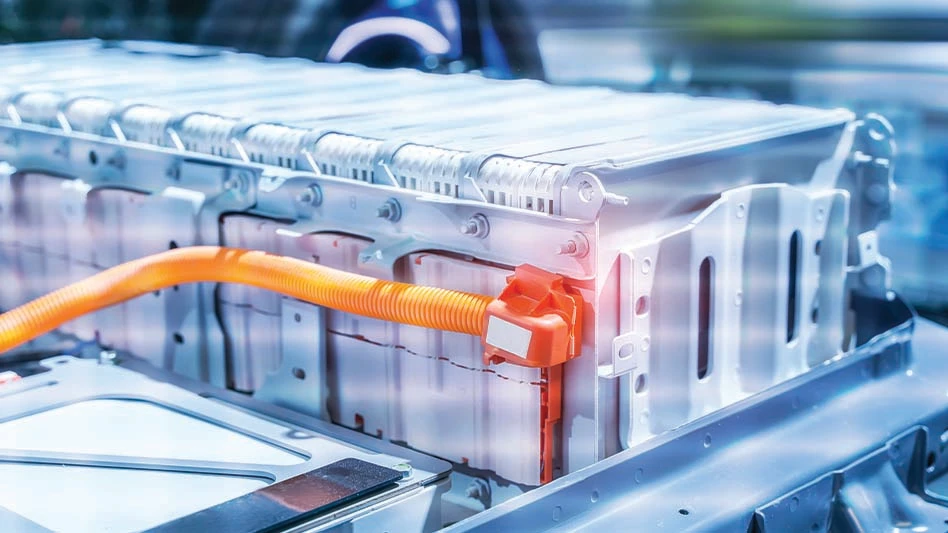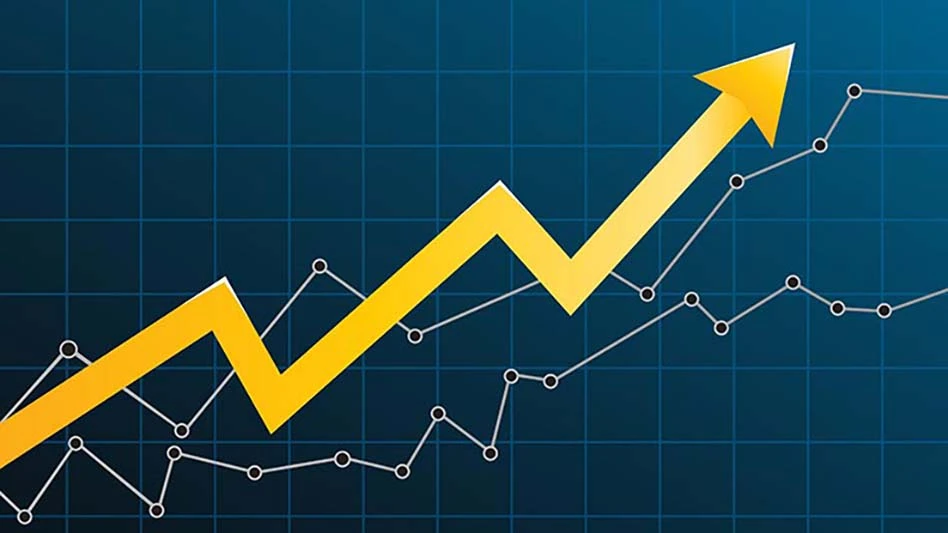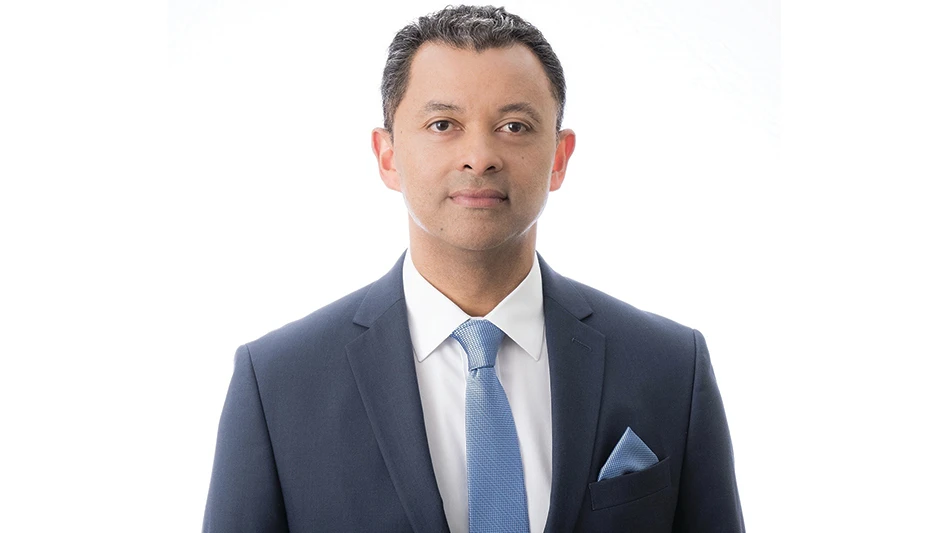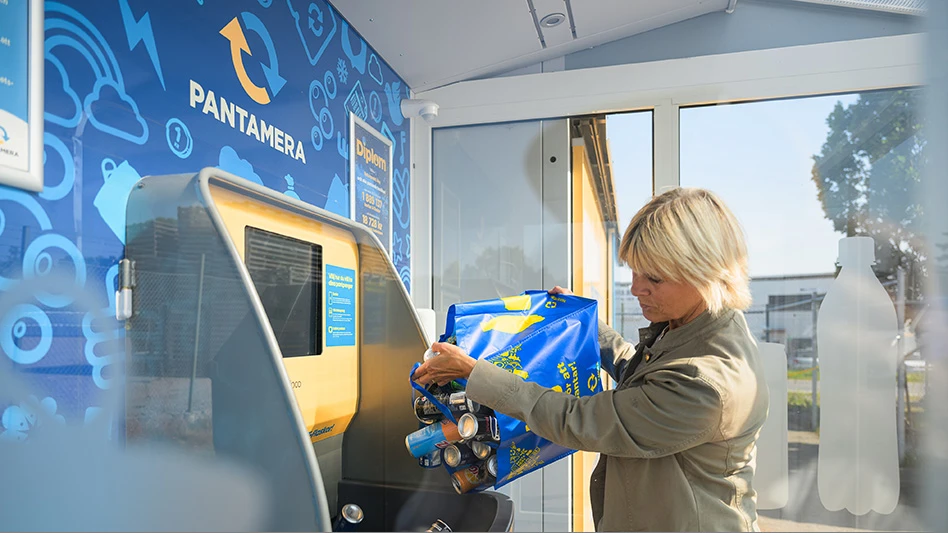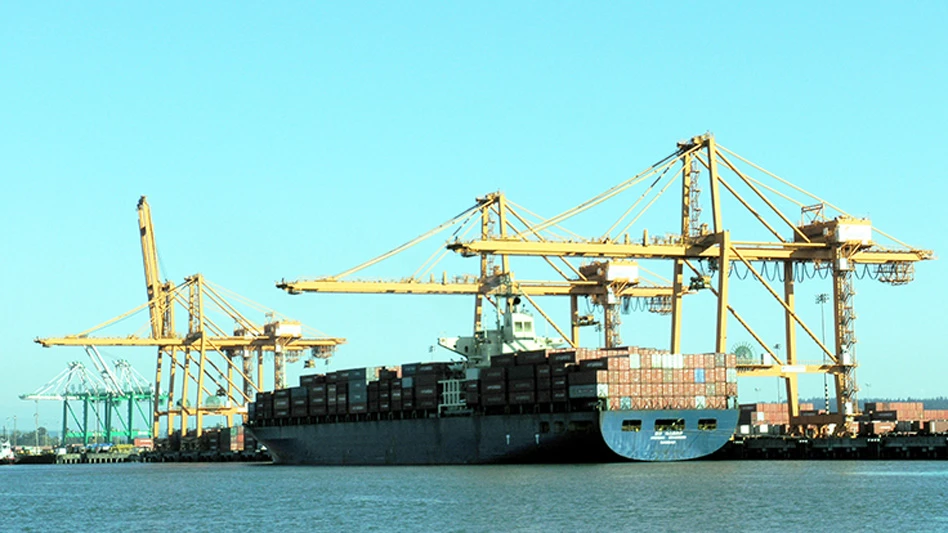
Nearly 33 years into his career at Sonoco, Johnny Newsome confidently can say he never has a boring day.
Newsome has held various commercial roles in the recycling division of the Hartsville, South Carolina-based packaging provider that began operations in 1899 making cone-shaped paper yarn carriers, and he’s seen plenty of change in an industry he says still is very young.
“Because of the change and volatility in the industry, I’m never bored,” Newsome says. “I never find myself wondering when 5 o’clock is going to get here. All of a sudden, I look up and the day’s gone by because it’s very active.”
Before starting at Sonoco full time in 1990, Newsome worked at the company’s recycling plant in Columbia, South Carolina, on a part-time basis while attending the University of South Carolina. Before graduating in 1989, he’d spend summers home in Hartsville working in Sonoco’s paper mill.
Over the course of his career, he’s been responsible for plant procurement and mill supply as well as for trade and domestic and export sales. Currently, as Sonoco’s director of global mill supply and trade sales, he oversees 20 recycling plants with the support of supply and sales teams.
“My job is to determine the allocation [of materials] to the plants, what we’re going to ship internally versus to the domestic mills and what goes in that export,” Newsome says.
And while there’s been plenty of positive change over three decades—Newsome says Sonoco uses 100-percent- recycled paper in all its mills, for example—there’s also been plenty of recent volatility created by market disruptions including the COVID-19 pandemic, import bans enacted by China, inflation and the Russia-Ukraine war.
In what he describes as a down market in November, Newsome says he and Sonoco are leaning on strong relationships built with suppliers and buyers, maintaining an open dialogue on what is happening in the market.
“It’s a relationship-based industry,” Newsome says. “I’ve met a lot of people, I know a lot of people and I’ve built relationships that I value. The industry’s always kept me engaged, and I like what I’m doing.”
In the following interview, Newsome provides insights into how the industry has changed over time, as well as how Sonoco is adjusting to recent market fluctuations.

Recycling Today (RT): How would you describe the state of the recovered paper market now compared with when you started your career and even compared with the last two years?
Johnny Newsome (JN): When I started in 1990, OCC [old corrugated containers] was the primary grade. There wasn’t even a lot of mixed paper. OCC was the primary grade, and the price was stable at roughly $25 to $30. It never moved. There’s much more volatility in price today.
The industry has gone through an evolution. We have higher recovery rates; markets have globalized much more. From globalization, we’ve seen the China ban that impacted flows. We’ve seen trade rollovers that impacted flows. We’ve seen significant new technology coming on globally and significant new global capacity, as well as the erosion of grades like news[print] and, more recently, the new dynamics of the pandemic and the Ukraine- Russian war. These things have as well impacted the market.
Back in the day, we looked at domestic containerboard, demand and collections to try to forecast price. Now, you have to look at many, many factors to figure out where this market’s headed.
RT: What is Sonoco’s philosophy when it comes to recycling?
JN: Our mission is to try to provide a combination of best-cost fiber and supply security to our paper mills, as well as innovative and service excellence across our diverse set of customer relationships. At the end of the day, Sonoco has been recycling for 100 years. All our mills around the world run off 100-percent-recycled paper. We’ve been dedicated to a sustainable environment well before the “green movement,” well before recycling was fashionable. We feel like we have a very strong philosophy when it comes to recycling.
RT: What are some of the biggest challenges facing the recovered paper industry right now and how is Sonoco working to address those?
JN: In the last few months, we’ve experienced a very significant, rapidly depleting market price and have had to make adjustments. The industry’s having to shift trade flows, primarily from domestic mills to export markets. Since the ban by China coupled with the pandemic, there have been significant issues in terms of capacity to ship tons as well as the increased cost to export. The down market, with the new market dynamics, the buy-sell price gap—especially around fiber—has deteriorated significantly. So, our cost to operate is up with inflation. Our buy-sell price is lesser than it has been. The industry’s not nearly as profitable as it was last year.
RT: How has the pandemic—and subsequent transportation, logistics and supply issues—affected mill buying?
JN: What [buyers] have had to do is shift from their historical supply base to areas where there is freight capacity coming back to their paper mill. Then, they pay more for that freight. Basically, when you make these shifts to new sources, you have to pay more to acquire the tons and then, even though there’s freight capacity, you have to pay more for the freight, so it’s increased the cost to our paper mills.
RT: How have you seen mills adjust to various supply issues among different grades? Has there been more focus on finding substitutes?
JN: I think there’s been a fundamental shift to increase OCC, with the increased global demand ... and there’s new screening technology out there. Mills have invested in new cleaning systems to run the lower-cost grades, such as mixed paper. There’s been a very nice differential in cost between OCC and mixed paper that warrants these investments, and as long as you have the right technology in your cleaning system, you can run mixed paper at a decent rate, as well as other grades like junk mail, boxboard cuttings and things of that nature.

RT: Have the drastic market fluctuations over the past two years given insight into how to run a recycling/mill-buying operation more efficiently?
JN: We’ve gone from one of the highest markets in history to, now, one of the lowest markets in history. What we’re doing in the down market is focusing on maintaining our supply relationships and educating our suppliers on what’s going on in the market and how inflation’s impacting the industry and their increased cost that we’re having to pass along.
The main thing is educating the suppliers on the situation. It will correct, but right now, being at the very bottom, it’s important we work with our suppliers to keep costs down.
Also, in our plant operations, we need to focus on keeping labor down, freight down [and] just drive productivity [and] then invest in automation to reduce labor cost and improve quality. Those are
RT: Has there been an increased focus on safety as inventory increases?
JN: When your plants or mills are full, safety is the No. 1 priority. Safety is the No. 1 priority, in general, in recycling operations. Inventory is a very unsafe area, so when inventory is increased to maximum levels, we have to talk about it every day, we have to focus [on] movement out of those plants that are at max levels. Recycled material oftentimes has to be double-handled [and] rebaled. You have to stair-step bales for safe levels. You may have to shift to an off-site warehouse, which adds another level of logistics and handling, which adds cost.
But then when things are flowing smoothly in the business, scrap is moving from the plant baler to a drop trailer and directly to a paper mill, so it minimizes those other things that are adding cost.
That’s what we have to educate our suppliers on and help them understand. It’s not just inflation, it’s increased handling costs through our plants, backlogs of inventory, working capital costs and then your sales price has dropped very rapidly due to shifts in trade, and we can’t adjust on the buy side as well as on the sell side. It’s just a lot going on that we’re having to adjust for, but the dust will settle and things will get better. We’re in a weird state of flux and transition at this point.
RT: How do you see the paper recycling industry having to adjust to some of the more permanent changes, like remote work and emphasis on e-commerce?
JN: What I’ll say about the industry is that one thing we’re good at is adjusting to change and volatility. In my career, the reason I’ve stayed in the industry is because we’ve always seen change in the industry. It’s evolved in front of my eyes, so we know about adjusting to change and we’ll do what we need to manage these changes around e-commerce and remote [work].
Get curated news on YOUR industry.
Enter your email to receive our newsletters.

Explore the December 2022 Paper Recycling Supplement Issue
Check out more from this issue and find your next story to read.
Latest from Recycling Today
- Nucor expects slimmer profits in early 2025
- CP Group announces new senior vice president
- APR publishes Design Guide in French
- AmSty recorded first sales of PolyRenew Styrene in 2024
- PRE says EU’s plastic recycling industry at a breaking point
- Call2Recycle Canada, Staples Professional expand partnership
- Circular Services breaks ground on north Texas MRF
- Tariff uncertainty results in choppy nonferrous scrap flows
